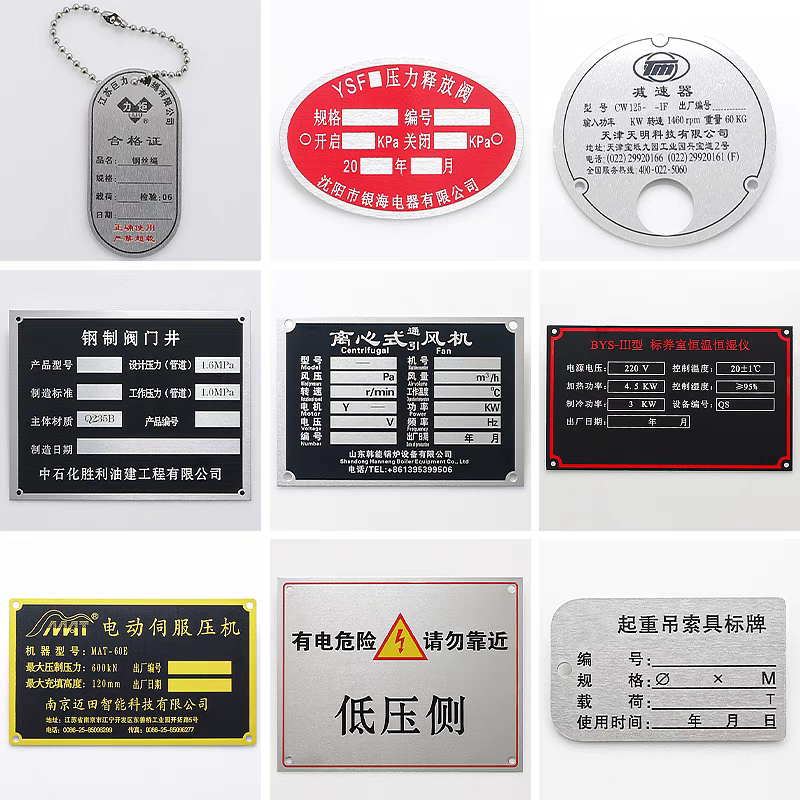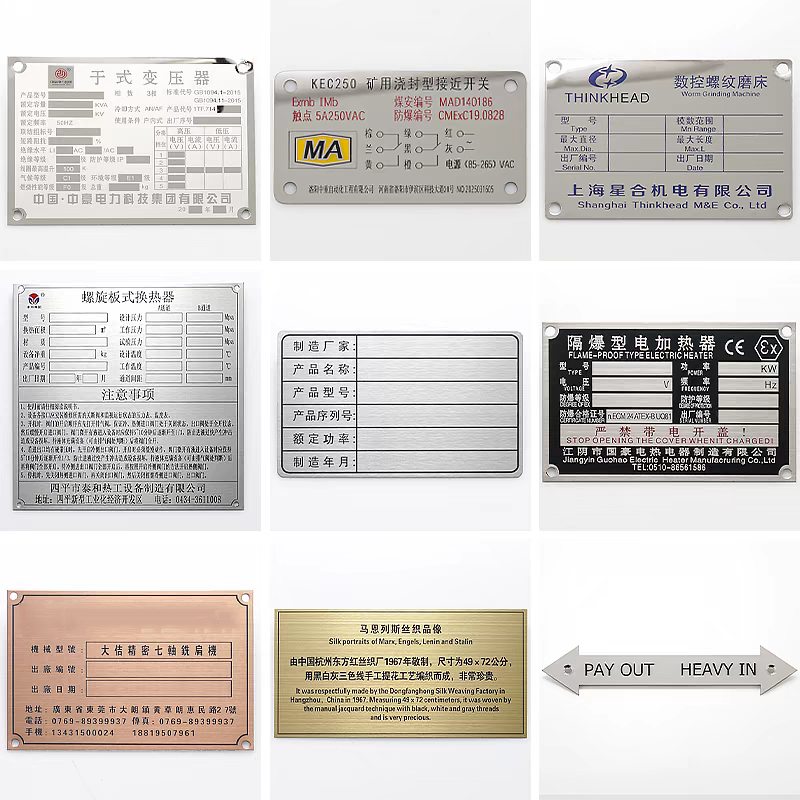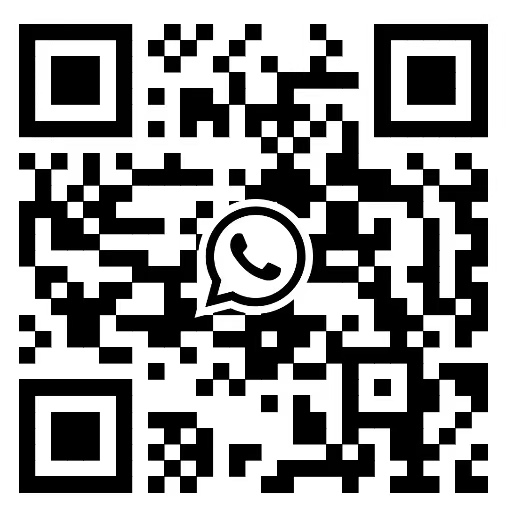In our complex world, filled with potential hazards in workplaces, public spaces, and even during travel, safety signs and what they mean form a critical, universal language. These visual cues transcend spoken language barriers, providing instant warnings, instructions, and vital information to prevent accidents and injuries. Understanding safety signs and what they mean isn't just about compliance; it's fundamental to personal safety and the well-being of everyone around you. This comprehensive guide explores the key categories of safety signs, their standardized formats, and, most importantly, what they mean in practical terms.

Why Safety Signs Matter: Beyond Compliance
Before diving into the specific signs, it's crucial to grasp why these visual tools are so vital. Safety signs and what they mean serve several critical functions:
Instant Communication: They convey complex safety messages quickly and efficiently, often when reading lengthy instructions isn't feasible or safe.
Hazard Awareness: They alert people to potential dangers they might not otherwise perceive immediately (like toxic substances, electrical risks, or trip hazards).
Behavior Guidance: They instruct people on mandatory actions (like wearing PPE) or prohibited actions (like smoking or entering restricted areas).
Emergency Direction: They provide essential information for escaping danger (emergency exits, fire equipment locations, first aid points).
Legal Protection: Properly implemented signs demonstrate an organization's commitment to safety, fulfilling legal obligations and reducing liability.
Universal Understanding: Based on international standards (like ISO 7010), their symbols and colors are designed to be understood across different cultures and languages.
Understanding safety signs and what they mean empowers individuals to navigate environments safely and respond appropriately in critical situations.
Decoding the Language: Colors and Shapes
The effectiveness of safety signs lies in their standardized use of colors and shapes. This creates immediate recognition before even processing the symbol or text. Here's the universal code:
Red (Prohibition/Danger/Fire): Commands attention for danger, stop, or prohibition. Often circular with a diagonal line or used for fire equipment labels. Meaning: "STOP," "DO NOT," "DANGER," or "FIRE EQUIPMENT HERE."
Yellow/Amber (Warning/Caution): Signals a potential hazard, urging caution. Typically triangular. Meaning: "WARNING," "CAUTION," "BE AWARE," "POTENTIAL HAZARD AHEAD."
Blue (Mandatory Action): Indicates a specific behavior or action that must be followed. Usually circular. Meaning: "YOU MUST," "ACTION REQUIRED" (e.g., wear safety glasses, keep clear).
Green (Safe Condition/Emergency Information): Denotes safety, first aid, no danger, or the location of emergency facilities. Typically rectangular or square. Meaning: "SAFE," "EMERGENCY EXIT," "FIRST AID," "RETURN TO NORMAL."
Other Colors (Supplementary):
Fluorescent Orange/Red: (Often for high visibility in emergencies or specific warnings like biohazards).
Black & White: Used for general information, signage, or sometimes prohibition text/symbols on yellow or red backgrounds.
Shapes reinforce these color messages:
Circle: Prohibition (red) or Mandatory action (blue).
Triangle: Warning (yellow).
Rectangle/Square: Emergency/Escape (green), Fire Equipment (red), or General Information (various).
1. Prohibition Signs: The "Do Not" Commanders
What They Mean: These safety signs explicitly forbid behavior or actions that are dangerous or not permitted in a specific area. Ignoring them often poses an immediate and severe risk.
Appearance: White background within a red circular band and diagonal bar (running top-left to bottom-right). The symbol or text depicting the prohibited action is black, centered within the circle. The red band must constitute at least 35% of the sign area.
Key Examples & Meanings:
No Smoking (Cigarette with lit end crossed out): Smoking or using naked flames is strictly forbidden due to fire or explosion risks (flammable materials, gases).
No Entry (Person walking crossed out): Unauthorized personnel are prohibited from entering a restricted or hazardous area.
Do Not Extinguish With Water (Flame crossed out over water drop): Using water on this specific type of fire (e.g., electrical, oil) is dangerous and will worsen it.
No Pedestrians (Person walking crossed out): Walking is not allowed in this area (e.g., vehicle-only zones, forklift routes).
No Access For Unauthorised Personnel (Person crossed out): Entry is restricted to trained or authorized individuals only.
Where You'll See Them: Entrances to hazardous zones (electrical substations, chemical storage), near flammable materials, on equipment requiring specific training, construction sites, vehicle routes.

2. Warning Signs: The "Be Aware" Alerts
What They Mean: These safety signs warn of potential hazards, dangers, or risky conditions that are not necessarily immediate but require caution. They prompt people to be vigilant and take care.
Appearance: Black symbol on a yellow (amber) triangular background with a black border. The triangle points upwards.
Key Examples & Meanings:
General Warning (Exclamation mark): Indicates a general, non-specific hazard. Often used where a more specific symbol doesn't exist or alongside text.
Flammable Material (Flame): Warns of the presence of materials that can easily catch fire.
Toxic Material (Skull and Crossbones): Alerts to the presence of substances that can cause poisoning if ingested, inhaled, or absorbed through the skin.
Corrosive Material (Test tube dripping liquid onto a hand and a bar): Warns of substances that can cause severe skin burns or eye damage and corrode materials.
Electric Shock Hazard (Lightning bolt arrow): Warns of the risk of electric shock from exposed wires, equipment, or overhead lines.
Slippery Surface (Person slipping): Indicates a floor or surface that is or may become slippery and pose a fall hazard.
Forklift Trucks Operating (Forklift symbol): Warns that forklifts or other industrial vehicles are operating in the area.
Overhead Load (Crate hanging from hook): Warns of the potential hazard of loads being lifted or suspended overhead.
Where You'll See Them: Areas with moving machinery, chemical storage or handling points, construction zones, wet floors, electrical panels, laboratories, warehouses with vehicles.
3. Mandatory Action Signs: The "You Must" Instructions
What They Mean: These safety signs specify an action that must be taken to maintain safety. Failure to comply increases the risk of injury or accident.
Appearance: White symbol on a blue circular background. The blue circle must cover at least 50% of the sign area.
Key Examples & Meanings:
Safety Glasses Must Be Worn (Glasses): Eye protection (safety glasses, goggles, face shields) is mandatory in this area.
Safety Helmet Must Be Worn (Helmet): Hard hats or safety helmets are required to protect against head injuries from falling objects or impacts.
Hearing Protection Must Be Worn (Ear with a line through it): Ear defenders or plugs must be used to prevent hearing damage from excessive noise.
Safety Footwear Must Be Worn (Shoe): Protective footwear (safety boots/shoes) is required to protect feet from crushing, punctures, chemicals, or electrical hazards.
Respiratory Protection Must Be Worn (Mask): Specific respirators or masks must be worn to protect against dust, fumes, gases, or biological hazards.
Pedestrians Must Use This Route (Person walking on a path): Directs pedestrians to a designated safe walkway.
Keep Locked (Padlock in locked position): Indicates a gate, door, or piece of equipment must be kept securely locked when not in use.
Wash Your Hands (Hands under water): Mandates hand hygiene, common in labs, kitchens, and healthcare settings.
Where You'll See Them: Workshop entrances, construction sites, laboratories, noisy environments, chemical handling areas, pedestrian walkways, site entrances requiring PPE.
4. Emergency Escape & First Aid Signs: The "Safety & Help" Locators
What They Mean: These safety signs indicate the location of safety equipment, escape routes, first aid facilities, or safe assembly points. They are crucial for directing people to safety and assistance during an emergency.
Appearance: White symbol or text on a green rectangular or square background. Green must cover at least 50% of the sign area.
Key Examples & Meanings:
Emergency Exit / Escape Route (Running man towards a door/arrow): Shows the direction to the nearest emergency exit or along an escape route. Often illuminated.
First Aid (White cross on green background): Identifies the location of a first aid station, kit, or stretcher.
Emergency Telephone (Telephone handset): Shows the location of a dedicated emergency phone.
Emergency Shower (Person under a shower): Indicates the location of an emergency shower, vital for chemical splashes.
Eye Wash Station (Eyeball under water jets): Shows the location of an eyewash unit for flushing eyes after contamination.
Safe Assembly Point (Person standing on ground): Identifies the designated location where people should gather after evacuating a building.
Stretcher Location (Stretcher symbol): Indicates where stretchers are stored for emergency use.
Defibrillator (AED symbol - heart with lightning bolt): Identifies the location of an Automated External Defibrillator.
Where You'll See Them: Along corridors, above doors, in prominent locations pointing towards exits, near hazardous areas (showers/eyewash), in communal areas, near entrances.
5. Fire Safety Signs: The "Fire Equipment" Guides
What They Mean: These safety signs specifically identify the location and type of fire-fighting equipment. They are essential for enabling a rapid response to a fire outbreak.
Appearance: White symbol or text on a red rectangular or square background. Red must cover at least 50% of the sign area. (Note: Fire exit signs remain green).
Key Examples & Meanings:
Fire Extinguisher (Flame over an extinguisher): Identifies the location of a fire extinguisher.
Fire Hose Reel (Hose reel): Shows the location of a fire hose reel.
Fire Alarm Call Point (Hand breaking glass): Indicates the location of a manual fire alarm activation point (break-glass unit).
Fire Blanket (Blanket symbol): Shows the location of a fire blanket.
Fire Ladder (Ladder symbol): Indicates the location of emergency fire ladders (less common now, often replaced by escape routes).
Fire Exit (Often green - "EXIT" text or running man): While the route is green, the actual door hardware or final exit door might have supplementary red "Fire Exit - Keep Clear" signage.
Directional Arrows to Equipment (Red background with white arrow): Used alongside equipment signs to indicate direction (e.g., down a corridor, around a corner).
Where You'll See Them: Mounted directly above or adjacent to fire equipment, along escape routes pointing to equipment, on fire alarm call points, near kitchen exits (fire blankets), on fire doors.
6. Supplementary Signs: Adding Clarity
While the core categories above cover the critical safety messages, supplementary signs often provide necessary context or clarification:
Text Panels: Rectangular white signs with black text often accompany symbol signs to provide more detail (e.g., "HIGH VOLTAGE" under a shock warning, "EAR PROTECTION ZONE" under a mandatory ear sign).
Photoluminescent Signs: Signs made from materials that absorb light and glow in the dark. Crucial for marking escape routes and exit signs in power failures.
Illuminated Signs: Internally or externally lit signs for continuous visibility, especially critical for exit signs.
Audible Signage: Fire alarms or public address announcements complement visual signs during emergencies.
Understanding safety signs and what they mean is not a passive skill; it's an active component of personal and collective safety. These standardized visual cues are meticulously designed to cut through noise, confusion, and language barriers to deliver life-saving information instantly. By recognizing the significance of colors (red for stop/danger, yellow for caution, blue for mandatory action, green for safety), shapes (circle for prohibition/mandatory, triangle for warning, square/rectangle for information), and the specific symbols, you empower yourself to:
Identify Hazards: Recognize potential dangers before they cause harm.
Avoid Prohibited Actions: Understand what actions are unsafe and forbidden.
Follow Essential Procedures: Know what protective equipment to wear or actions to take.
Navigate Emergencies: Find escape routes, fire equipment, and first aid quickly when seconds count.
Foster a Safer Environment: Contribute to a culture of safety awareness wherever you are.
Always stay alert to the safety signs around you, whether at work, in public buildings, on the road, or even in unfamiliar environments. Taking a moment to understand what they mean could be the most important moment of your day. Make knowing safety signs and what they mean a fundamental part of your safety awareness toolkit.






